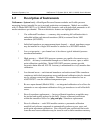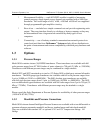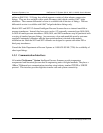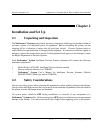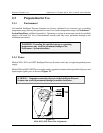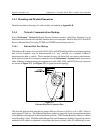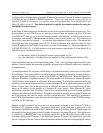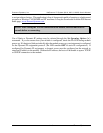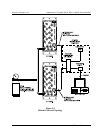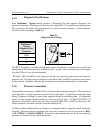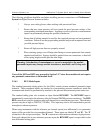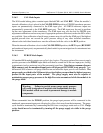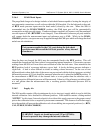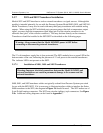
Pressure Systems, Inc. NetScanner™ System (9016, 9021, & 9022) User’s Manual
www.PressureSystems.com
2 - 4
configured Static IP addressing or Dynamic IP address assignment. Dynamic IP address assignment
is through the use of RARP or BOOTP protocols. Unless your application requires the use of
Dynamic IP address assignments, it is strongly suggested that the module be left configured for the
Static IP address protocol. This default method is typically the simplest method for using the
Intelligent Pressure Scanner.
In the Static IP addressing mode, the module will use a factory default IP address on power-up. This
default address is set to 200.20x.yyy.zzz where x is derived from the module type (0 for 9016 and
1 for 9021/9022) and yyy.zzz is derived from the module serial number. A similar method is used
to calculate each module’s Ethernet hardware address shown on the module tag. Note that each of
these fields (separated by a period, ‘.’) is a decimal representation of a byte value. This means that
each field may have a maximum value of 255. For 9016 modules with serial less than 255, this
default IP address will be 200.200.0.zzz where zzz is the serial number (i.e., 9016 serial number 212
is IP 200.200.200.212) . For 9016 modules with serial numbers greater than 255, the default IP of
200.200.y.zzz is calculated as follows:
y is the integer result of dividing the module serial number by 256.
zzz is the remainder of dividing the serial number by 256 (serial number modulus 256).
These calculations may be verified by checking that y * 256 + zzz equals the original module serial
number. Once a module has powered-up and has assigned itself a default IP address it is capable of
communications.
An alternate method for assigning an IP address to an Ethernet module is referred to as a Dynamic
IP assignment. This method allows a module to have its IP address dynamically assigned at power-
up by an application running on a node of the TCP/IP or UDP/IP network. When configured for
Dynamic IP address assignment protocols, the reset module will broadcast its Ethernet hardware
(MAC) address on the network in a Dynamic IP request packet. This broadcast packet identifies the
module by its hardware address and requests that a dynamic IP server application return to it an IP
address for use. Once this broadcast message is received, the dynamic server application will then
return an IP address to the module in a dynamic IP reply packet. Most dynamic IP server
applications determine this IP address from a user maintained file that lists Ethernet hardware
addresses with their desired IP address. If modules are added to the network or module IP addresses
are to be changed, the user can simply edit this configuration file. This capability is common on
most UNIX based machines and is also available (although less common) in some TCP/IP packages
available for PC platforms.
Support of the Dynamic IP server protocol is not currently included in the Windows
®
95/98 or
Windows
®
NT operating systems. In order to allow users of PC platforms to make use of the
Dynamic IP capabilities of the 9016, 9021, and 9022, a simple Windows
®
95/98/NT application was
developed by Pressure Systems which is capable of acting as a Dynamic IP server. This application
is referred to as BOOTP Lite since it actually makes use of the BOOTP protocol that closely
resembles the Dynamic IP request. Like traditional dynamic IP servers, this application allows the
user to configure a file that contains Ethernet hardware addresses and the corresponding IP address




